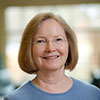This article is more than 5 years old.
I’ve missed a couple of recent NCLA conferences, but it was nice to pick up again in an attractive, renovated conference venue right here in Winston-Salem. (I’ve been told that the large wood panels came from old barns around the state—an example of showcasing North Carolina’s heritage.) I was part of a session chaired by Tanya and included Chrystal Carpenter (Elon), Erin Lawrimore (UNC-G), and Megan Mulder, which focused on interactive, hands-on learning activities in teaching primary source literacy. Tanya and I agreed that we could put to use some of the ideas we heard about, in our own LIB290 course.
Inevitably I found my way to the RASS session on “Current Trends in Reference.” Panelists answered questions posed by the moderator on a range of reference issues: problems encountered at the Reference Desk (food! there’s a ready solution!; regulars who call multiple times a day for prolonged conversations—actually limit to 3-4 per day?); tips for handling difficult/challenging patrons (tag team with a colleague); favorite blogs (ranging from old friends such as The Guardian book reviews, Inside Higher Ed, and Chronicle, to Scholarly Kitchen, Smashing Magazine, and Ask a Manager); how recent trends have impacted reference services; whether librarians cover the reference desk or have migrated to student assistants; how to train students; and favorite programs or software to manage the reference desk (scheduling in Google Docs forms plus templates in Sheets); what events and workshops have been successful (Long Night against Procrastination, an internal event staffed by reference librarians and writing tutors; one on one tutorials/research appointments—done, check!).
I also attended the Forsyth County Public Library session on designing their new building, and like Kyle, was impressed by the amount of input solicited from across the library staff—what to “keep, toss, or create”– and certainly by the final outcome. Support from the community for the library will surely be strengthened by so much attention to attractive and helpful features in the design and working of the library (for instance, light and views for seating around the perimeter of floors, a multiplicity of seating types to meet preferences, and addressing security issues in situating the children’s room).
